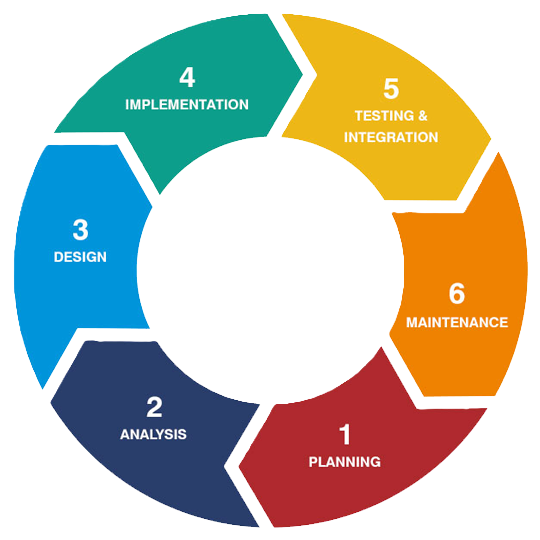Software Development Lifecycle (SDLC)
Introduction

The Software Development Lifecycle (SDLC) is the process used by software organizations to design and build software. Over the lifetime of a software project it will go through several stages, each with its own set of activities and deliverables. Description of the SDLC is often broken down into phases, each of which represents a different stage in the development process.
It is important to note that the SDLC is not a one-size-fits-all process. Different organizations and projects will have different requirements and constraints that will influence the SDLC that is used. The SDLC is a flexible framework that can be adapted to meet the needs of a particular project.
While we often think of the SDLC as a linear process, it is important to remember that software development is an iterative process. You never really finish developing software, you just reach a point where you are ready to release it to the end users. We then start the process over again with the next release.
Phases of the SDLC
The exact phases will vary depending on the methodology used, the organization, and the project. Sometime you might see it contain five phases, other times six, seven, or even more. However, the following are the most common phases in the SDLC:
- Planning: This is the initial phase of the SDLC. During this phase, the project team defines the scope of the project, identifies the resources that will be required, and creates a project plan. The project plan will outline the tasks that need to be completed, the timeline for completing those tasks, and the resources that will be allocated to the project.
- Analysis: Sometimes called the requirements phase, this phase is where the project team gathers and analyzes the requirements for the software. This phase is critical to the success of the project, as it ensures that the software will meet the needs of the end users.
- Design: In this phase, the project team creates a detailed design for the software. This design will outline the architecture of the software, the user interface, and the data structures that will be used. The design phase is critical to the success of the project, as it provides a roadmap for the development team to follow.
- Implementation: This is the phase where the software is actually built. The development team will write the code for the software, test it, and fix any bugs that are found. This phase is critical to the success of the project, as it is where the software is actually created.
- Testing: Sometimes called the validation phase, during this phase the project team will test the software to ensure that it meets the requirements that were defined in the analysis phase. This is more than just finding bugs, it is about ensuring that the software meets the needs of the end users.
- Deployment: In this phase, the software is deployed to the end users. This phase is critical to the success of the project, as it is where the software is actually put into use.
- Maintenance: Once the software has been deployed, the project team will provide ongoing support and maintenance for the software. This phase is critical to the success of the project, as it ensures that the software continues to meet the needs of the end users.
The most common variant of this combines the planning and analysis phases into a single phase called the requirements phase. It is also common to see the deployment phase to be dropped entirely, with the software being deployed as part of the validation phase.

SDLC Models
While these phases are common across most organizations and projects, the way in which they are applied can vary significantly. There are several different models that can be used to implement the SDLC, each with its own strengths and weaknesses. Some of the most common models include:
- Waterfall Model: The waterfall model is a linear, sequential approach to software development. In this model, each phase of the SDLC is completed before moving on to the next phase.
- Iterative Model: The iterative model is an incremental approach to software development. In this model, the project is broken down into a series of iterations, with each iteration focusing on a specific set of requirements.
- Spiral Model: The spiral model is a risk-driven approach to software development. In this model, the project is broken down into a series of iterations, with each iteration focusing on a specific set of requirements.
- Agile Model: The agile model is an iterative, incremental approach to software development. In this model, the project is broken down into a series of iterations, with each iteration focusing on a specific set of requirements.
There are many other models out there, and some of these are known by different names. The key is to find the model that works best for your organization and your project.
The Agile model is by far the most popular model in use today. It is an iterative, incremental approach to software development that focuses on delivering working software to the end users as quickly as possible.
Conclusion
Software development is a complex process that requires careful planning and execution. The SDLC provides a framework that can help organizations to design, develop, and test high-quality software. Your software will go through the phases of the SDLC, and it is important to understand what each phase entails and how it contributes to the success of the project.